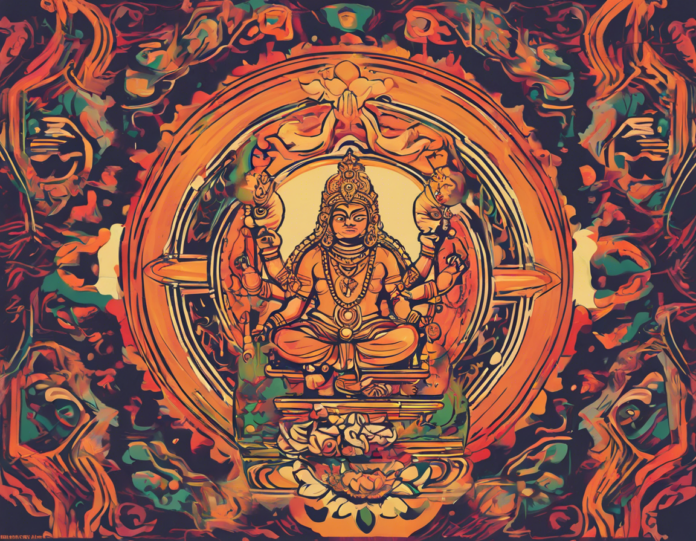Introduction
In the rich cultural tapestry of India, there exists a time-honored tradition known as Biswakarma Prakalpa. This tradition celebrates the art of craftsmanship and the skills passed down through generations. From intricate woodwork to mesmerizing metal craft, Biswakarma Prakalpa encompasses a wide array of disciplines that showcase the ingenuity and creativity of artisans. Let’s delve deeper into this fascinating realm of craftsmanship.
The Origins of Biswakarma Prakalpa
Biswakarma Prakalpa finds its roots in Hindu mythology, where Lord Vishwakarma is revered as the divine architect and craftsman of the gods. Legend has it that Lord Vishwakarma crafted the celestial weapons and palaces of the gods with impeccable skill and precision. The artisans who follow in his footsteps are considered to be blessed with his divine wisdom and talent.
The Craftsmanship
The artisans practicing Biswakarma Prakalpa display a mastery of various materials, techniques, and designs. Woodworking stands out as one of the primary forms of craftsmanship, with artisans carving intricate patterns and designs on furniture, doors, and sculptures. Metalwork is another prominent aspect, with artisans skillfully shaping and molding metals like brass, copper, and silver into exquisite pieces of art.
The Significance
Biswakarma Prakalpa holds significant cultural and religious importance in India. Artisans are highly respected for their craftsmanship, and their work is often associated with auspicious occasions and rituals. From crafting idols for worship to designing ornate jewelry, Biswakarma Prakalpa plays a vital role in preserving traditional art forms and cultural heritage.
Preserving Heritage
In the fast-paced modern world, traditional art forms like Biswakarma Prakalpa face the risk of fading into obscurity. However, organizations and initiatives have emerged to support and promote these artisans, ensuring that their skills are passed down to future generations. By preserving this heritage, we not only honor the artisans’ craftsmanship but also safeguard a crucial part of our cultural identity.
The Future of Craftsmanship
As we embrace technological advancements and globalization, the future of craftsmanship like Biswakarma Prakalpa may seem uncertain. However, there is a growing appreciation for handmade, artisanal products that embody a sense of authenticity and uniqueness. By supporting these artisans and their craft, we can ensure that the art of Biswakarma Prakalpa thrives and continues to captivate the world with its timeless beauty.
Conclusion
Biswakarma Prakalpa stands as a testament to the enduring legacy of craftsmanship in India. Through intricate designs, skilled artistry, and unwavering dedication, artisans breathe life into traditional art forms that have stood the test of time. As we celebrate the art of Biswakarma Prakalpa, we pay homage to the rich cultural heritage and artistic brilliance that define India’s vibrant tapestry of craftsmanship.
FAQs (Frequently Asked Questions)
- What is the significance of Biswakarma Prakalpa in Indian culture?
-
Biswakarma Prakalpa is highly revered in Indian culture for its association with craftsmanship, artistry, and traditional skills. Artisans practicing Biswakarma Prakalpa are considered to possess divine talent and play a crucial role in preserving cultural heritage.
-
What are the primary materials used in Biswakarma Prakalpa?
-
Artisans working in Biswakarma Prakalpa often work with materials like wood, metal (brass, copper, silver), and other natural elements to create intricate designs and masterpieces.
-
How is Biswakarma Prakalpa different from modern craftsmanship?
-
Biswakarma Prakalpa emphasizes traditional techniques, intricate designs, and cultural symbolism, whereas modern craftsmanship often incorporates contemporary styles and materials.
-
Are there any organizations working to support artisans practicing Biswakarma Prakalpa?
-
Yes, there are various organizations, NGOs, and governmental initiatives dedicated to supporting and promoting artisans practicing Biswakarma Prakalpa, ensuring the preservation of this rich cultural heritage.
-
Can anyone learn the art of Biswakarma Prakalpa?
-
While the art of Biswakarma Prakalpa is traditionally passed down through generations within artisan families, there are opportunities for enthusiasts and aspiring craftsmen to learn and hone their skills under the guidance of experienced artisans.
-
What are some common products created through Biswakarma Prakalpa?
-
Artisans practicing Biswakarma Prakalpa create a wide range of products, including intricately carved furniture, decorative items, religious idols, jewelry, and architectural elements like doors and windows.
-
How can individuals support the artisans practicing Biswakarma Prakalpa?
-
Individuals can support artisans practicing Biswakarma Prakalpa by purchasing their products, promoting their work through social media and word of mouth, and participating in events and workshops that showcase their craftsmanship.
-
Is Biswakarma Prakalpa only practiced in India?
-
While Biswakarma Prakalpa has its roots in Indian culture and mythology, similar traditions of craftsmanship can be found in various cultures around the world, each with its unique styles, techniques, and symbolic significance.
-
What role does innovation play in Biswakarma Prakalpa?
-
While Biswakarma Prakalpa upholds traditional techniques and designs, artisans often incorporate innovative approaches, materials, and motifs to adapt to changing trends and preferences while staying true to their cultural heritage.
-
How can the younger generation get involved in promoting Biswakarma Prakalpa?
- The younger generation can get involved in promoting Biswakarma Prakalpa by learning about its history and significance, supporting artisan communities, volunteering with organizations that champion traditional craftsmanship, and incorporating handmade artisanal products into their daily lives to appreciate the artistry and skill involved.

